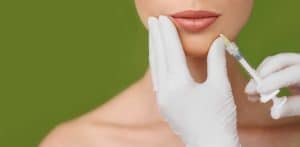Botox and fillers are two popular non-surgical cosmetic treatments that can help reduce the signs of ageing and enhance your appearance. While both treatments can be effective, they work in different ways and are used to address different concerns. To help you choose the best process, we’ll explain the distinctions between Botox and fillers in this article.
What is Botox?
The injectable medication known as “Botox” is made from botulinum toxin. Botox temporarily paralyses the muscles that produce wrinkles and fine lines to work. Botox stops the impulses from the nerves to the muscles when injected into the targeted muscles, enabling the muscles to relax and
reduce the appearance of wrinkles and fine lines.
Botox is commonly used to treat:
- Frown lines between the eyebrows
- Crow’s feet around the eyes
- Forehead wrinkles
- Bunny lines around the nose
- Neck bands
Here are some more benefits of Botox.
What are Fillers?
Fillers are an injectable treatment used to add volume to the face, smooth out wrinkles and fine lines, and enhance facial contours. Fillers are made of various materials, including hyaluronic acid, calcium hydroxylapatite, and poly-L-lactic acid. They add volume to the targeted areas, which helps smooth out wrinkles and fine lines.
Fillers are commonly used to treat:
- Nasolabial folds (lines that run from the nose to the corners of the mouth)
- Marionette lines (lines that run from the corners of the mouth to the chin)
- Hollows under the eyes
- Thin lips
- Sunken cheeks
- Jawline definition
The Differences Between Botox and Fillers
Treatment Areas
As previously discussed, dynamic wrinkles, or wrinkles brought on by repetitive facial motions like frowning or squinting, are often treated with Botox. Botox is frequently used to address wrinkles on the forehead, around the eyes, and in the space between the eyebrows.
On the other hand, fillers are typically used to add volume to areas that have lost volume due to ageing or weight loss. Fillers can enhance the cheeks, lips, and jawline, filling in lines and wrinkles around the mouth and nose.
Mechanism of Action
Botox and fillers both provide outcomes, although in different ways. Botox relaxes the muscles that source wrinkles and fine lines, whereas fillers give the desired areas more volume.
Duration of Results
The duration of results for Botox and fillers can vary depending on the type of treatment, the area being treated, and the individual patient. Botox results typically last for three to four months, while fillers can last anywhere from six months to two years.
Treatment Time
Botox and fillers are rapid, non-invasive procedures that can be finished in a few minutes. While filler injections might take between 15 and 30 minutes, botox injections usually take 10 to 15 minutes.
Side Effects
Although fillers and botox are mostly safe treatments, adverse consequences are always possible. Bruising, redness, and swelling at the injection site are frequent adverse effects of Botox, although these same side effects are frequent with fillers and lumps or bumps under the skin.
Choosing Between Botox and Fillers
Choosing between Botox and fillers will depend on your concerns and goals. If you are primarily concerned with wrinkles and fine lines caused by repeated facial expressions, Botox may be the better option for you. If you want to add volume to specific areas of your face, such as the cheeks or lips, or to fill in deep lines and wrinkles, fillers may be the better choice.
It’s important to note that Botox and fillers can also be used together to achieve a more comprehensive rejuvenation of the face. Your cosmetic provider can help you determine the best treatment plan based on your unique needs and goals.
Preparing for Botox or Filler Treatment
Here are some things you can do to get ready for your visit if you are thinking about getting Botox or fillers:
- Avoid Blood Thinners: Avoid using blood-thinning drugs like aspirin, ibuprofen, or fish oil supplements before receiving therapy. They might make bruising at the injection location more likely.
- Stay Hydrated: Before your consultation, drinking a lot of water can help lower your risk of swelling and bruising.
- Avoid Alcohol: Avoid drinking alcohol the night before your appointment, as this can increase the risk of bruising.
- Discuss Your Medical History: Be sure to discuss your medical history with your cosmetic provider, as some medical conditions or medications may affect your eligibility for treatment.
Botox and fillers are effective non-surgical treatments for reducing the signs of aging and enhancing your appearance. While they work in different ways and address different concerns, they can also be used together for a more comprehensive rejuvenation of the face.
If you are considering Botox or filler treatment, it’s important to choose an experienced and reputable cosmetic provider who can help you achieve your desired results safely and effectively.
The choice between Botox and fillers comes down to your concerns and goals. By understanding the differences between these treatments and discussing your options with your cosmetic provider, you can decide which treatment is right for you.




